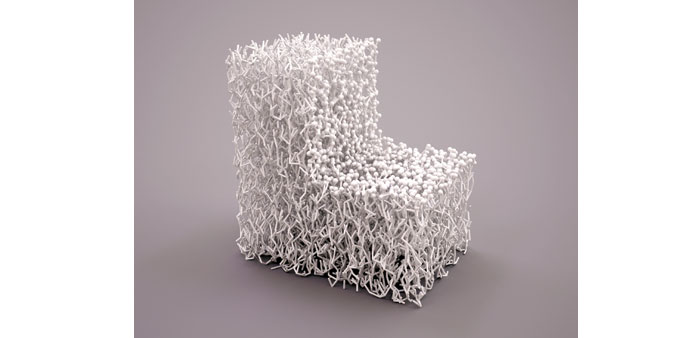By Caspar Tobias Schlenk
American dancer and model Dita von Teese enters the room and her audience is bowled over. “A reporter said: ‘She’s like something out of a computer game’ and he was right,” recalls Francis Bitonti. Bitonti is referring to the dress von Teese wore that was made from a nylon mesh material embellished with 12,000 Swarovski crystals.
The New York-based architect and designer created the dress in co-operation with Michael Schmidt. It was made using a 3-D printer, making it the first dress of its kind to spark such media interest.
3-D printers have the potential to mark the next industrial revolution, in the eyes of many people in the tech sector.
Engineers are experimenting making replacement parts for machines. A “printed” gun was test-fired in the United States in May. Even heart valves may one day be “printable”.
But artists and designers are also using the technology to create sculptures and jewellery. The technology works in a way comparable to that of a conventional inkjet printer. But instead of ink, 3-D printers use nylon, ceramic and plastic.
The material is laid down layer for layer to create a three dimensional object. Francis Bitonti has been working with 3-D printers for the past six years. He has designed necklaces, belts and bicycle stands on a computer before using the services of a company to print them.
He remembers especially clearly a white chair that looked as if it had been woven together using tree branches. “It was such a complex design that it could never have been made using any other process,” says Bitonti. The 29-year-old began to take an interest in unusual shapes and patterns as an architecture student and simulated them in three dimensions on a computer screen.
Today he’s printing works of art. For Bitonti it’s a new method of artistic expression: “You see no trace of a human hand anymore.”
Scientists at the Massachusetts Institute of Technology are also researching how 3-D printing can be used in design and architecture.
Professor Neri Oxman is experimenting with creating large objects in her laboratory.
“In the near future we will be able to print buildings,” she asserts. Oxman says by converting a robot’s arm into a 3-D printer it would be able to build a concrete wall layer by layer. One day it may be possible for everyone to design their own home and then print it.
But how are 3-D printers influencing our lives today?
The New York artist Josh Kline is trying to answer that question.
He scanned the hands of a few of his friends and placed a virtual bottle in their hands on a computer. He filled the virtual bottles with fluids like Coca Cola to give his work of art colour.
“I liked the idea of transforming real objects into information and then creating real objects from information,” says Kline.
Kline draws a parallel with our lives where the smartphone has become an integral part of our memory. “We are digitalising our lives on Facebook by placing photos online,” he says.
Kline’s hand sculpture and other works of art made by a 3-D printer have been shown at the Museum of Modern Art. He believes more young artists will begin using 3-D computers. Kline thinks the technology will change art “in the same way that Photoshop and digital cameras have changed photography”.
Both Bitonti and Kline think that as soon as 3-D printers become cheap enough they will become a part of everyday life. – DPA

